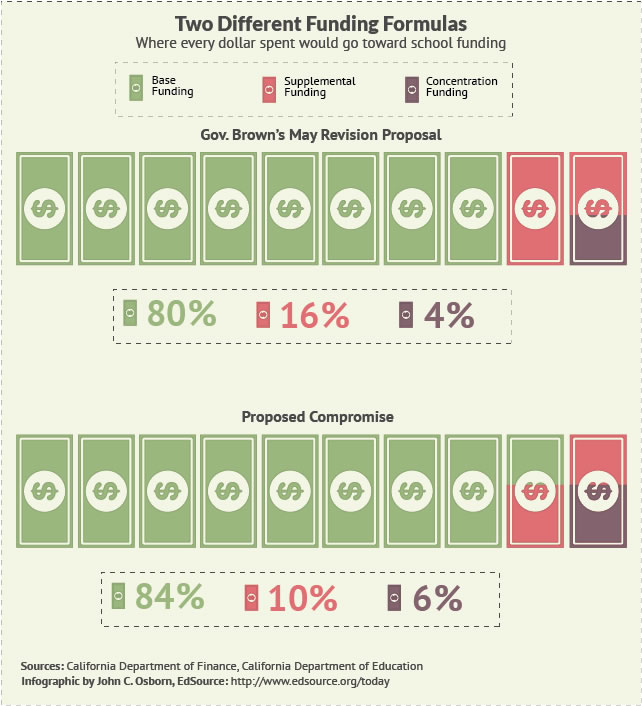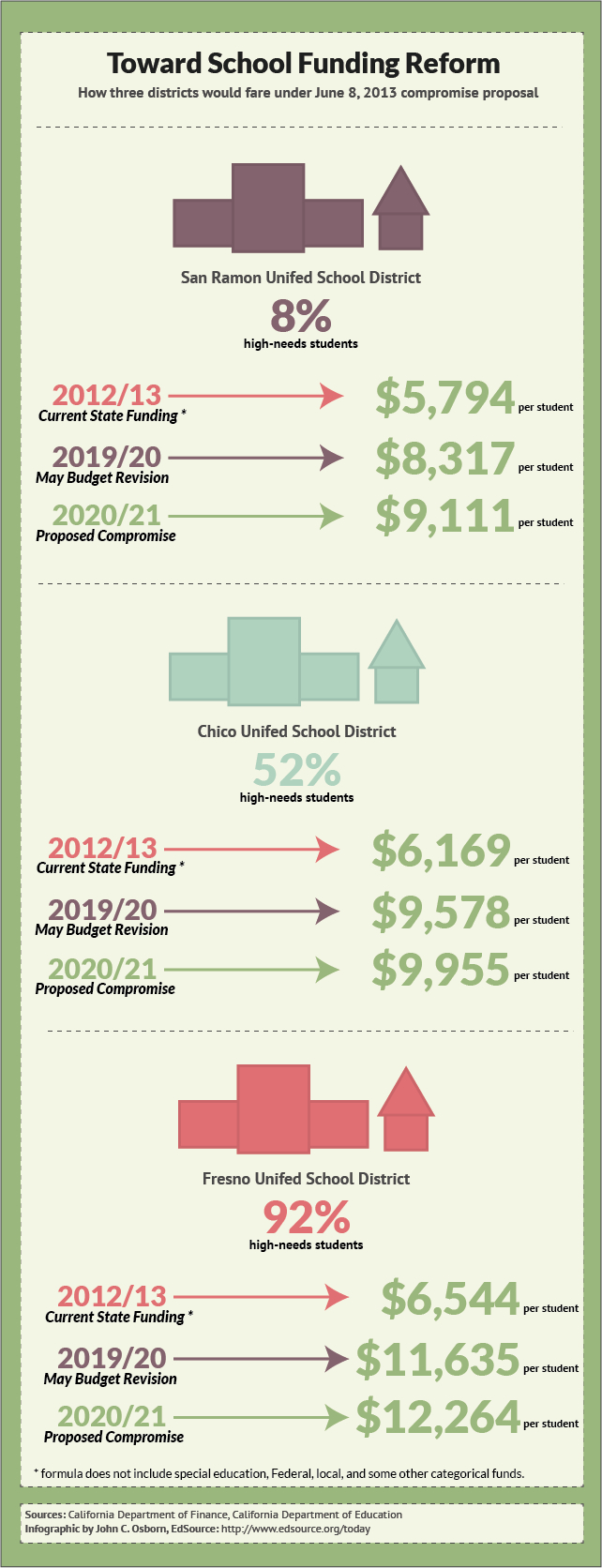First Time in 5 Years California Education Funding Does Not Shrink

On Monday night, the state Legislature and Governor Brown came to a conclusion on the future of California education funding. They compromised on a local control funding formula that looks much different from the Senate proposal in SB 69 and Brown's May revise.
More emphasis has been placed on base grants or the amount of funding that each school district receives regardless of demographics. Base grants now make up 84 percent of dollars spent on K-12 schools. The statewide average base will be $7,103 per pupil with variations based on grade levels and class sizes.
Supplemental grants experienced a reduction from both Senate and the governor's proposal. Instead of providing an additional 35 percent (Brown) or 40 percent (Senate) of the base grant for every disadvantaged student (low-income or English learner), the state will give 20 percent.
This is a consequence of creating a larger base grant. The compromise is a response to more affluent communities that felt underserved by both proposals.
Although the Senate wanted to do away with concentration grants, the compromise included it. If a school district's disadvantaged student population makes up more than 55 percent, it will receive an additional 35 percent of base funding for each student above the threshold. The original threshold was 50 percent.
EdSource provided two infographics that clearly illustrate what the new funding formula means and how it compares to past proposals:
The original phase-in length was seven years, but the new California education funding plan will take eight years to fully implement. The following infographic spells out how three different school districts in three different situations will be funded for the coming years:
The state government was able to come up with a solution before the budget deadline of June 15. Accountability measures for the new local control of spending remain to be detailed. However, it will be the first time since the 2007-08 school year that education won't experience a budget cut.
For a summary of all changes made to past proposals, refer to the document here.





